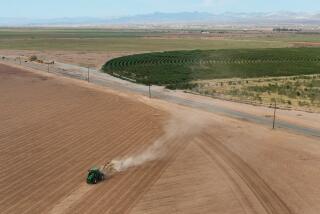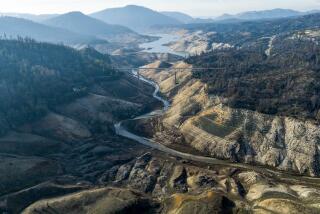A year of hard-to-predict weather seen for Southland
- Share via
La Niña, the demon diva of drought, has ended, but what comes next could be even more foreboding: La Nada.
La Nada, or “nothing” in Spanish, is climatologist Bill Patzert’s nickname for when surface sea temperatures in the equatorial Pacific Ocean are about normal. That means ocean temperatures are not too warm, which would trigger an El Niño and would typically mean a rainy winter in Southern California. The sea also is not too cold, which produces a La Niña and usually means a dry season.
“I don’t like La Nada,” said Patzert, who works at NASA’s Jet Propulsion Laboratory in La Cañada Flintridge. “Why is that? Because in La Niña or El Niño, you can actually make a forecast, because they provide some structure to the climate system for an entire winter — you can make a fairly decent long-range forecast….
“With La Nada, it’s like teenagers without rules. It’s unconstrained and unpredictable,” Patzert said.
La Nada years can coincide with the most troublesome of weather.
In the winter of 2004-05, the borderline La Nada/weak El Niño produced the wettest winter since the end of the 19th century, dousing downtown Los Angeles with 37 inches of rain, far above the average of about 15 inches.
The rains that year claimed at least 17 lives in Southern California, including those of 10 people who died in the massive mudslide in the coastal Ventura County community of La Conchita.
Just two years later, another La Nada/wannabe-El Niño pattern emerged. That year ended up being the driest in the history of record-keeping in downtown Los Angeles, with a measly 3 inches of rain. The land was so parched that California poppies never emerged for their springtime bloom, acorns never grew on oak trees and cattle herds had to be sold off for lack of drinking water.
Patzert says he prefers El Niños because California typically needs water. Six out of every 10 years are dry years, he said.
“What everybody would really like to hear is, ‘Get ready for a big El Niño,’ because the results are somewhat predictable. But when we have a weak-to-zero signal, then we can expect almost anything,” Patzert said.
At this point, Patzert said there’s a 50-50 chance the situation will remain La Nada or will develop into a weak El Niño. Patzert said it’s too late in the year for a monster El Niño to develop.
The declaration that La Niña had dissipated was made Thursday by the National Weather Service’s Climate Prediction Center. The center forecasts neutral equatorial sea temperatures at least through September.
For the current meteorological year, which began July 1, downtown L.A. has been drier than normal, accumulating less than 9 inches of rain.
More to Read
Sign up for Essential California
The most important California stories and recommendations in your inbox every morning.
You may occasionally receive promotional content from the Los Angeles Times.














